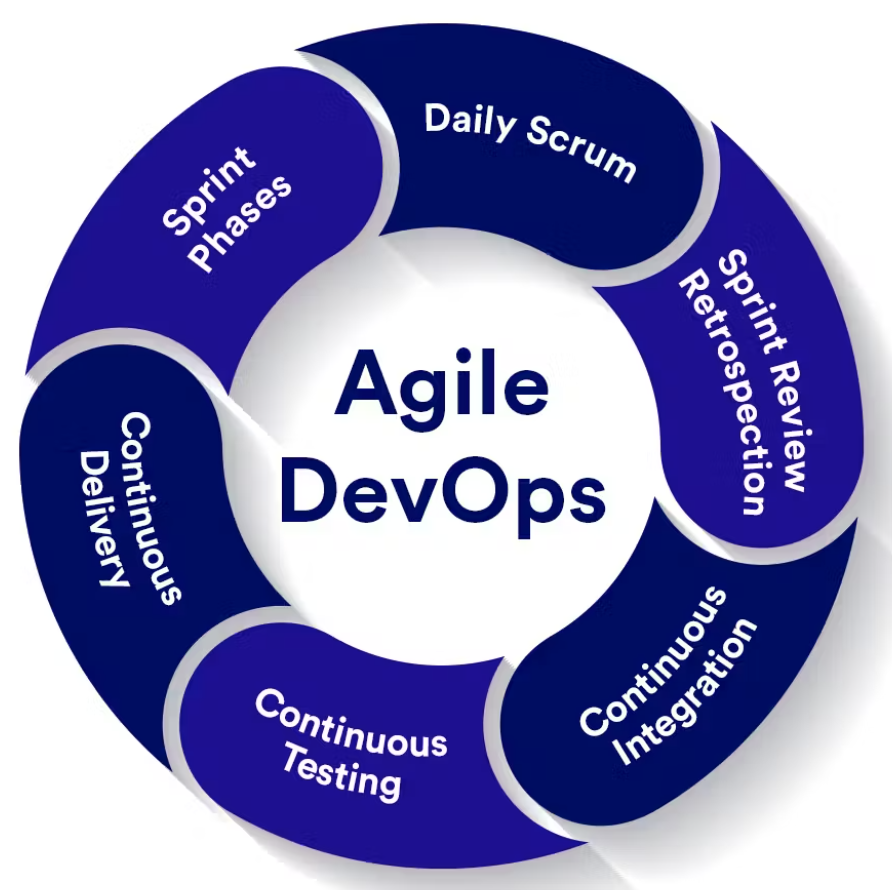DevOps CI/CD has revolutionised software development by bringing together development and operations teams to enable faster and more efficient delivery of software. At the heart of successful DevOps practices lies a robust infrastructure that supports continuous integration and continuous delivery (CI/CD). In this blog, we will provide an overview of key DevOps infrastructure tools and explore their roles in facilitating CI/CD processes.

1. Configuration Management Tools:
Configuration management tools automate the process of managing and provisioning infrastructure resources. Tools like Ansible, Puppet, and Chef allow for declarative definitions of infrastructure configurations, ensuring consistency and repeatability. These tools enable infrastructure as code, where infrastructure configurations are treated as version-controlled artifacts. Configuration management tools play a crucial role in automating the setup and maintenance of infrastructure resources, providing a reliable foundation for CI/CD pipelines.
2. Containerisation Platforms:
Containerisation has become a fundamental technology in DevOps for creating lightweight, portable, and isolated environments. Docker is a popular containerisation platform that simplifies the packaging and deployment of applications and their dependencies. Containers enable consistent execution across different environments, making it easier to achieve reproducible builds and streamline the deployment process. Containerisation platforms enhance CI/CD pipelines by ensuring consistent and efficient deployment of applications.
3. Orchestration Tools:
Orchestration tools, such as Kubernetes and Docker Swarm, manage the deployment and scaling of containers in a clustered environment. These tools automate container scheduling, load balancing, and scaling based on demand. Orchestration platforms enable high availability, fault tolerance, and scalability of applications. They play a critical role in CI/CD by allowing automated deployment, rolling updates, and seamless scaling of application components.
4. Continuous Integration and Build Tools:
Continuous integration is a core practice in CI/CD that involves integrating code changes frequently and automatically building and testing the application. Jenkins, Travis CI, and GitLab CI/CD are popular CI/CD tools that facilitate automated builds, unit testing, and code quality checks. These tools integrate with version control systems, trigger build processes, and provide feedback on build status and test results. Continuous integration tools ensure that changes are continuously validated, enabling early detection of issues and faster feedback loops and improve build quality.
5. Artifact Repositories:
Artifact repositories are central storage locations for build artifacts, such as binaries, packages, and libraries. Tools like Nexus Repository Manager, JFrog, Artifactory, and GitLab Container Registry provide secure and versioned storage for artifacts. These repositories enable traceability and control over artifact dependencies, ensuring consistency and reliability in the software release process. Artifact repositories are vital for managing the flow of artifacts through different stages of the CI/CD pipeline.
6. Infrastructure as Code (IaC) Tools:
Infrastructure as Code tools, such as Terraform and CloudFormation, allow infrastructure configurations to be expressed as code. These tools enable the provisioning and management of infrastructure resources using a declarative and version-controlled approach. Infrastructure as Code ensures consistent and reproducible infrastructure deployments across different environments. It enables automation, scalability, and agility in infrastructure provisioning, supporting the rapid iteration and deployment of applications in CI/CD pipelines.
7. Monitoring and Logging Tools:
Monitoring and logging tools, like Prometheus, ELK Stack (Elasticsearch, Logstash, Kibana), and Grafana, provide visibility into the performance, health, and logs of applications and infrastructure components. These tools collect and analyse metrics, logs, and events, enabling real-time monitoring, troubleshooting, and performance optimisation. Monitoring and logging tools are essential for identifying bottlenecks, detecting anomalies, and ensuring the reliability and performance of applications in CI/CD environments.
Conclusion:
DevOps infrastructure tools play a crucial role in enabling efficient CI/CD processes. Configuration management tools ensure consistent infrastructure configurations, containerisation platforms simplify application packaging and deployment, orchestration tools automate container management, continuous integration and build tools facilitate automated testing and validation, artifact repositories ensure versioned and controlled artifact management, Infrastructure as Code tools enable declarative infrastructure provisioning, and monitoring and logging tools provide visibility and insights into application performance.
By leveraging these DevOps infrastructure tools effectively, organisations can establish a robust and automated CI/CD pipeline, leading to faster software delivery, improved quality, and enhanced collaboration between development and operations teams.
